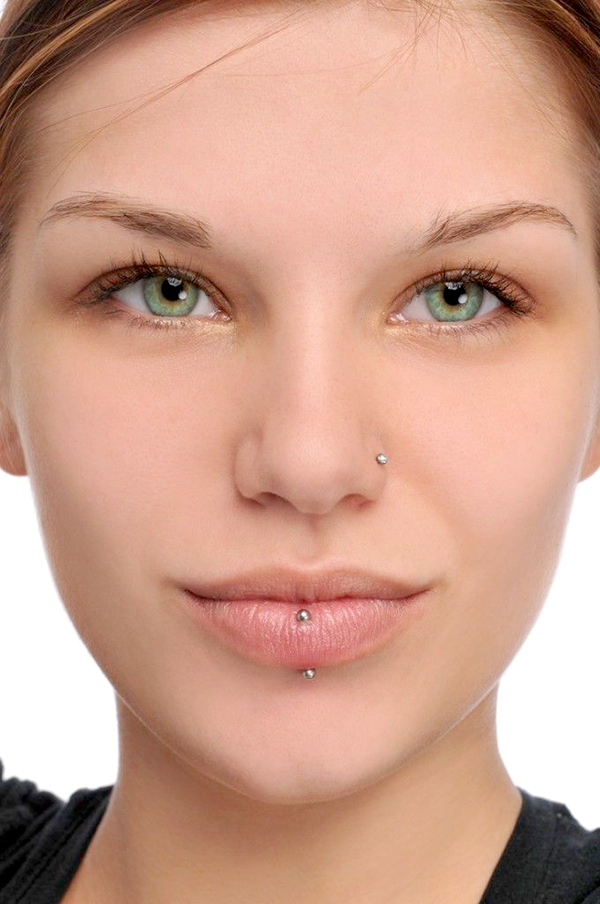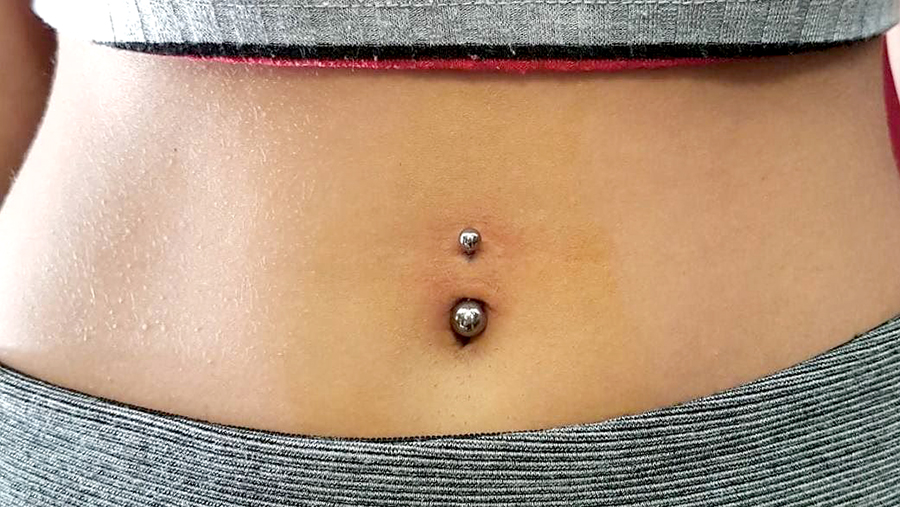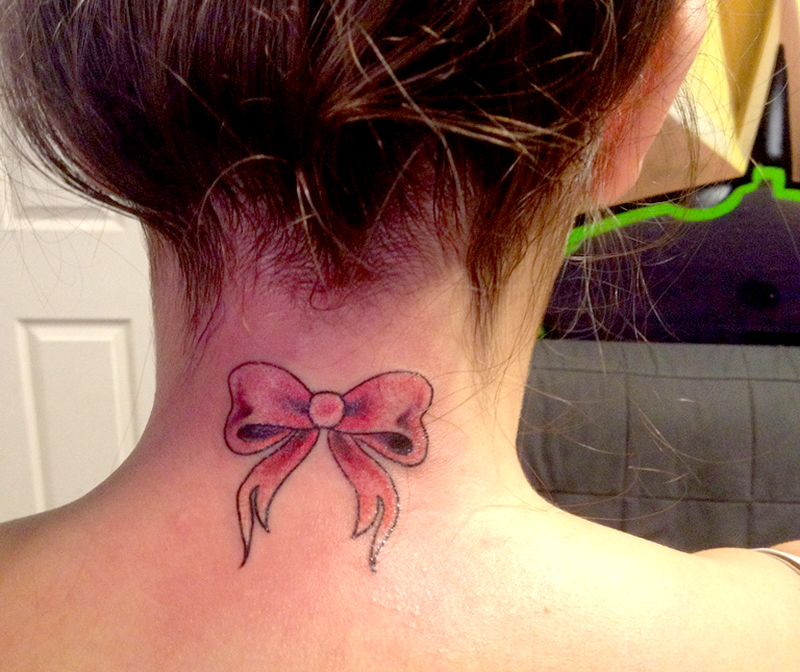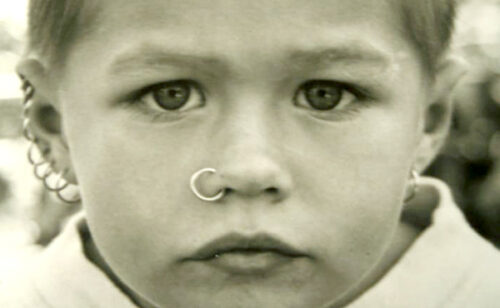Parenting: “Local Expert on Tattoos and Body Piercings Passed Away”
Body Piercings and Tatoos
I became the local expert
by Gregory A. Barrett, M.D.
This will undoubtedly be my obituary:
And it was all my daughter’s fault.
Really…
The story began the morning after Rachel’s eighteenth birthday when she arrived at the breakfast table with a silver stud in her left nostril. Apparently, the previous evening she had elected to commemorate the “I don’t need your consent anymore” milestone with a symbolic gesture. It was about a year later when an obscure tattoo appeared on the back of her neck followed by a gold ball in her tongue, a mystical design on her right forearm, a matching one on the left…well, you get the picture.

It is highly possible Rachel may have other concealed piercings and tattoos above and beyond these, but how would a father ever know? What I did know was that she was my daughter and I respected her. An increasing number of my patients were showing up in the office with these markings and punctures of the skin every day, and it was time for me to become more knowledgeable.
So, after doing my homework (in the form of extensive background reading and research), I invited Rachel to accompany me and the two of us spent a day touring some of the major body piercing and tattoo emporiums of our fair city. The time invested prepping for this project had been well spent. My ability to speak their language (“stencil,” “flesh tunnel,” “surface-to-surface,” “Prince Albert,” etc) gave me a degree of legitimacy which succeeded in opening the doors to a candid discussion.
And much to my surprise I came away from the experience with a different point of view. The technical expertise of the practitioners I met and the knowledge of their craft was amazing. They take great pride in their work; they do truly care greatly about the health and well-being of their clients. The cleanliness of the parlors we visited and the meticulous attention to sterile technique on display would put most medical offices to shame. I was quite impressed.
This was all a whole new world to me, a culture I never knew existed. Returning home I prepared a presentation of my discoveries thinking at the time only that it might provide fresh material for future public speaking engagements. Well, the talk immediately took off like a rocket, I ended up giving it more times than I could count, and before you could say Angelina Jolie I had been crowned the “Local Expert on Tattoos and Body Piercings.”
This phenomenon was likely nothing more than a simple process of elimination. I mean, who else in their right mind in the medical community would ever have desired such a reputation? But these certainly are a most fascinating and colorful pair of Topics.
PIERCINGS

A famous pharaoh’s statue from ancient Egypt featured a prominent naval ring establishing as anthropologic fact that body piercing dates back to at least 1400 B.C. Thus, people have been doing this to themselves and each other for over thirty-six hundred years, and recent surveys would seem to indicate that it doesn’t seem to be going away anytime soon. Romans, Mayans, the Victorian Age – throughout history there have been periodic bumps in the popularity of these procedures.
The most recent spike (pun?) came in the 1970’s when the gay community began championing piercing. As an aside, can any of you remember the debate back then regarding the significance of which ear was pierced? Pretty soon thereafter cultural icons as diverse as Madonna and Michael Jordan began displaying metal on their bodies lending immediate legitimacy to the practice and signifying the fad had officially been adopted by the general population.
The reasons for piercing are diverse, but basically it is seen as fashionable, daring, a personal statement and, in contrast to its sister in body art, the tattoo, not viewed as permanent. Anything under the sun can, and has, been pierced – the lower earlobe (the only piercing which can be performed with a gun, by the way), the upper ear (vulnerable to the acquisition of an extremely difficult to treat and serious infection of the cartilage called chondritis), the nose (slow healing and prone to embedment), the eyebrow (beware the droop), the tongue (a two-step procedure requiring special equipment), the belly button (technically difficult, the highest rate of infection, and oddly enough the one most often performed by a friend in the bedroom), the nipple (ouch!), and, of course, the genitalia (o…mi…gosh……….).
Naval Piercing

Complications are multiple and not infrequent. Infection is the most common, the odds increasing dramatically with the lack of experience of the perpetrator. In addition there are risks of hematoma, overgrowth of keloid scar tissue, contact dermatitis, the aforementioned vanishing earring, and formation of chronic low-grade infections called granulomas. The best hope for a successful outcome is to have the piercing placed with meticulous sterile technique by a trained professional, be compulsive about cleaning the site on a daily basis, and making sure the initial jewelry used is hypoallergenic surgical grade stainless steel or its equivalent and left in place for a minimum of six weeks.
TATTOOS
The documented history of tattoos dates back even further. “The Iceman,” a remarkably well-preserved corpse discovered several years ago buried in a glacier in the Italian Alps and dating from 3300 B.C., was found to have stripes and bands tattooed on his lower back, knees, and ankles, roughly correlating to his underlying arthritis.
This custom remained popular worldwide until Judo-Christianity rained on the parade with a prohibition located in the Old Testament located just downstream from the classic “love thy neighbor as you love yourself.” Chapter Nineteen, Verse Twenty-Eight in the Book of Leviticus clearly prohibits tattoos and body piercings as pagan (along with a seemingly similar injunction against dressing up for Halloween, haircuts, and steak tartar, by the way) condemning these practices as a mutilation of God’s handiwork. Interestingly enough the Koran contains an almost identical taboo.

The prevailing negative attitude of the times changed when Dr. Joseph Banks, ship physician on the voyages of Captain Cook in the eighteenth century, had tattoos applied to his body during a stopover in Tahiti, and upon his return home he became an immediate sensation in London society turning the mood of the western world once again more favorably towards these colorful decorations.
Samuel O’Reilly modified and patented an invention of the great Thomas Edison in 1891, an electric machine initially designed and intended to embroider fabrics, for the purpose of tattooing, and the technology had arrived to take this ancient practice into the modern age. By 1900 ninety percent of sailors had tattoos and many servicemen from World Wars One and Two came home with primitive tats from far-away ports.
But it wasn’t until the 1980’s and the development of the “Fine Line” technique that serious artistic involvement began with the thin outlines, precise shading, and detailed designs one sees today. In the year 2000 it was estimated that there were roughly twenty million tattooed Americans and with the rate tripling annually this number today would be a gross underestimate.
The procedure itself is performed with latex gloves, disposable needles, and an electric tattoo machine with a press foot pedal capable of three thousand pricks per second. There is a high-pitched whining noise as the needle penetrates the dermis depositing inorganic inks into the skin. The design is either a pre-formed stencil selected from a catalogue or a novel one crafted with the help of the artist. An alternative approach to the latter is to have the tattoo performed freestyle by one of the very top craftsmen.
Afterwards the care is relatively simple consisting of gentle cleaning with cold water and the application of an ointment such A&D. Infections are again the most common complication, Hepatitis C and even HIV being potential possibilities. One significant irritation which can occur weeks to even years later is an allergic sensitivity to the pigments used manifesting clinically as itchy redness and swelling. Unfortunately, that one can’t be cured short of excision and grafting.

The psychological reasons for getting a tattoo are basically similar in nature to body piercing with the additional attraction of its permanence, the concept of making an indelible statement about something or someone. “Tattoos stay, all else changes,” is the mantra. And that can be both good and bad….
Early on in my pediatric career an attractive and extremely pregnant young woman arrived at the hospital with her significant other in a state of active labor. It was to be her first baby and it was obvious to all who witnessed them that this couple was very much in love. Upon preparing the mother-to-be for delivery it was noted that she had an artistic rendering of a beautiful valentine on her lower abdomen.
Furthermore, this delightful tattoo featured an arrow placed longitudinally through the center of the heart with the feathered end fluttering in the direction of her umbilicus and the tip coming out the bottom portion pointing with unmistakable clarity directly towards the area known in pediatrics as “her privates.” And in the middle of the heart was inscribed the sentimental, touching, and yes, I would dare say romantic, inscription, “This belongs to Johnnie.”
Indeed, it almost brought tears to one’s eyes reflecting on the sense of sharing and commitment which must have been present between her and her beloved at the time when this remarkable tattoo was etched. What a magnificent statement of fidelity, the meaning obviously clear to anyone forever after who had the good fortune to gaze upon it! Unfortunately, however, the road of life proved once more to be full of ironic twists of fate, as the name of the man who was presumably the father of her firstborn child and who had accompanied this young woman so admirably through her labor and delivery was – Harold.
In thirty percent of tattoos attempts are made at some later date to touch up, revise, or remove them; but, far more say they would like to and regret their decision. Laser treatment is a method available now which actually is capable of breaking up the inks, but anyone considering this option needs to be aware of a couple of sobering facts.
First of all, it is not really all that effective. And secondly, not only is laser treatment quite expensive but the cost is going to come straight out of one’s pocket because there is no insurance plan anywhere which would be willing to pay for this entirely elective cosmetic procedure. An insurance company is no more likely to fork up the money to have a tat removed than it would have been to pay for it in the first place. These truths ought to give any sane person at least a moment’s hesitation prior to initially committing to the needle.
Many Tattoos

“The Theory of Body Art” gives a philosophical basis for these durable practices. The hypothesis presented here is that in the final analysis decoration of one’s body is simply basic human nature. Men and women have been using themselves as a canvas in a variety of ways and manners since earliest recorded history.
Thus, the rationalization is that body art is actually nothing more than a spectrum including practices as diverse as dieting, fingernail polish, pierced ears, body building, spray tans, hair coloring, liposuction, mustaches, tattoos, teeth whitening gels, makeup, and breast implants. According to this theory, all of the above are truly one and the same – under the skin, so to speak.
Because of my association with this subject, I am frequently asked if I have ever been poked or inked and the answer, in case you’re wondering, is an emphatic NO! Are you kidding? No way! I’m way too big of a coward. But I do recognize these customs for what they are, worldwide phenomena that have been around for several thousand years; and, if performed with care by a dedicated professional, except for a few notable exceptions (i.e. the upper ear cartilage) they are relatively low risk procedures. {And I could add as a side bar to parents everywhere that you can expand your horizons and learn a whole bunch of new and interesting things if you simply keep your eyes and ears open, listen to your children, and try to avoid being prematurely judgmental.}
So, this is why, when my ticket finally gets punched, the title of this chapter will undoubtedly be my obituary. Personally I’d prefer to have been remembered for something – anything – rather than being the local expert on tattoos and body piercings. But, there you are, one thing you cannot do is choose your own legacy. Oh, well.
Like I said at the beginning, it was all my daughter’s fault.
☤


